Ethnic differences: how are fingerprints linked with race?

linked with ethnicity/race?
People often assume that skin color is the only real racial difference, but the truth is far more complex: even fingerprint patterns vary significantly among ethnic populations around the world!
Studies around the world have also revealed that no single fingerprint pattern type is unique for any race. However, in time studies have confirmed over and over again that fingerprint type distributions do vary with ethnicity. The historical materials presented below provide a peek in the typical trends of variation in populations around the world.
Cummins & Midlo ('Finger Prints, Palms and Soles'
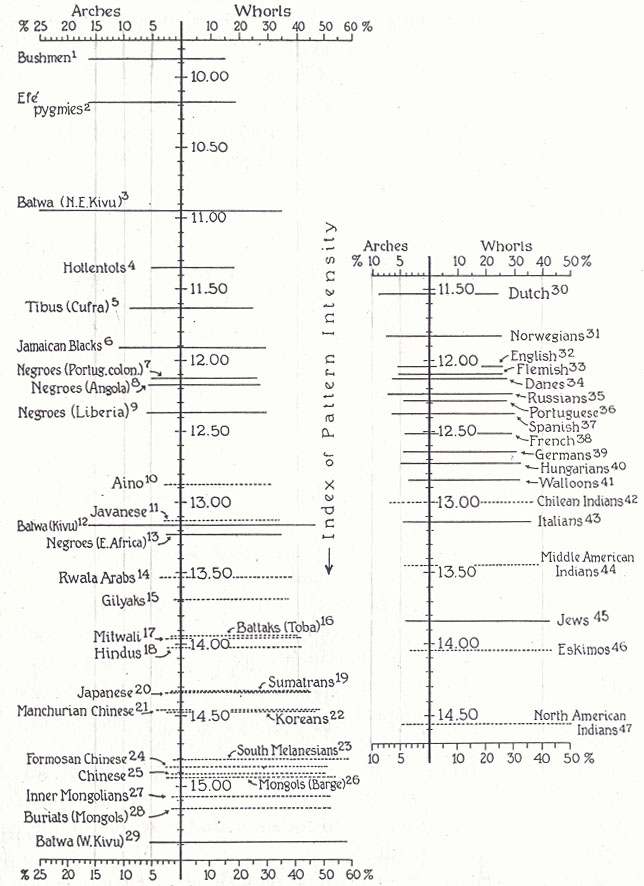
• For European populations they described that e.g. the so-called 'pattern intensity' is typically lower in Nordics compared to Mediteraneans. In Northern Europeans arches are seen in about 6% to 9% of all fingers, and whorls are seen in about 25% to 30% of all fingers, while in Southern Europeans arches are less common and whorls are more common (see the right column in the figure above).
Europeans can be used as a point of reference to describe the other populations around the world:
• For African populations the prevalence of arches is typically higher (5% to 25%) than in Europeans, and whorls are higher (40% to 50%) than in Europeans - resulting in lower 'pattern intensities' than seen in Europeans (see the left column in the figure above).
• For American Indians, Arabians, Hindus, Jews & Syrians the prevalence of arches is slightly lower (2.5% to 5%) than in Europeans, and whorls are higher or lower (15% to 35%) than in Europeans - resulting in higher 'pattern intensities' than seen in Europeans (see the left + right column in the figure above).
• For Asian populations the prevalence of arches is significantly lower (2% to 4.5%) than in Europeans, and whorls are much more common (35% to 60%) than in Europeans - resulting in much higher 'pattern intensities' than seen in Europeans (see the left column in the figure above).
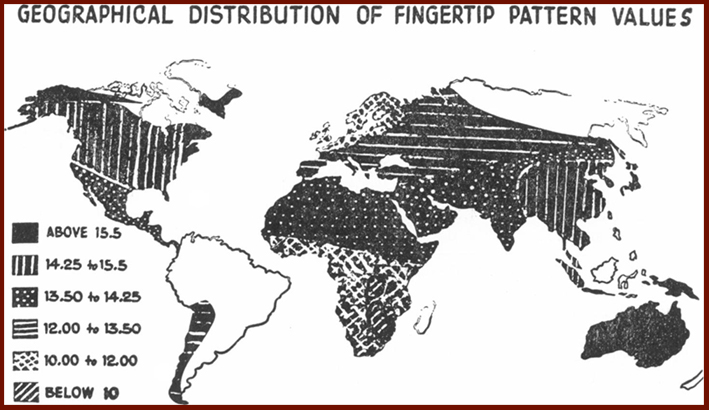 David C. Rife (Institute of Genetics and Department of Zoology, Ohio State University) presented in 1953 a fingerprints world map displaying the distribution of the so-called 'pattern index' around the world -
more details are presented in the article: 'World Map of Fingerprints'.
David C. Rife (Institute of Genetics and Department of Zoology, Ohio State University) presented in 1953 a fingerprints world map displaying the distribution of the so-called 'pattern index' around the world -
more details are presented in the article: 'World Map of Fingerprints'.
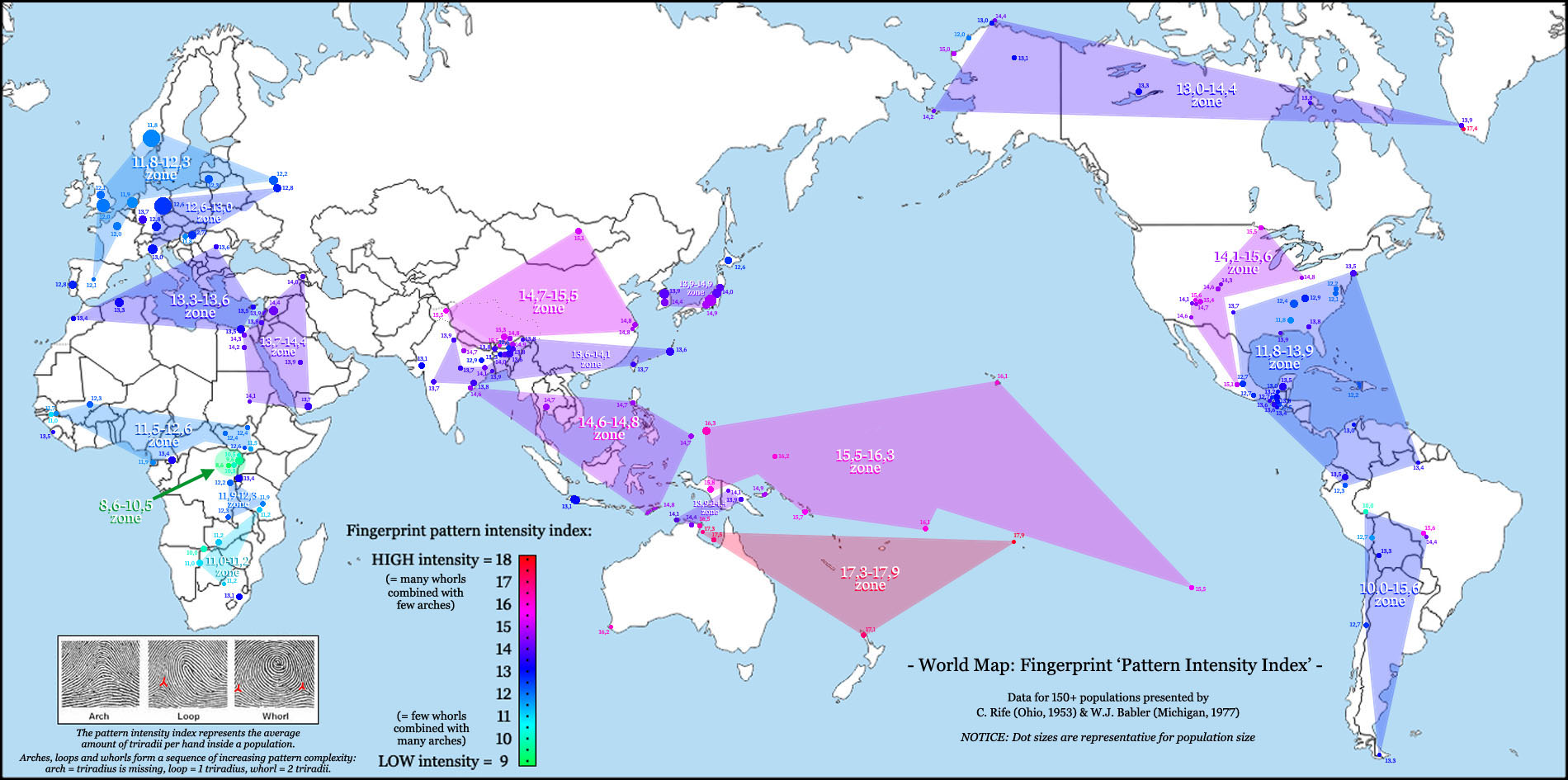
Recent studies have confirmed the racial tendencies that were e.g. described by Rife + Cummins & Mildo. A 2005 study by Henry J. Swofford revealed that among American populations the ethnic differences manifest likewise as seen in various part of the world:
"..., whorls tended to dominate the Asian race more than any other race. ... Likewise, the black race tended to be dominated by loops and arches."
And a new study focussed the interaction between sexe & race in fingerprints (among 5 world populations, including: Americans, Britains, Chinese, Iranians & Nigerians), revealed that both in men and women whorls dominate the Asian race more than any other race. Despite that whorls are typically more common in males than in females, in Chinese females are whorls even more common than in any of the four male populations of the other ethnic populations. And a likewise pattern is seen for arches in Nigerian females and males - only in American females are more common than in Nigerian males - see the picture below ('click' on the picture for a high resolution image).
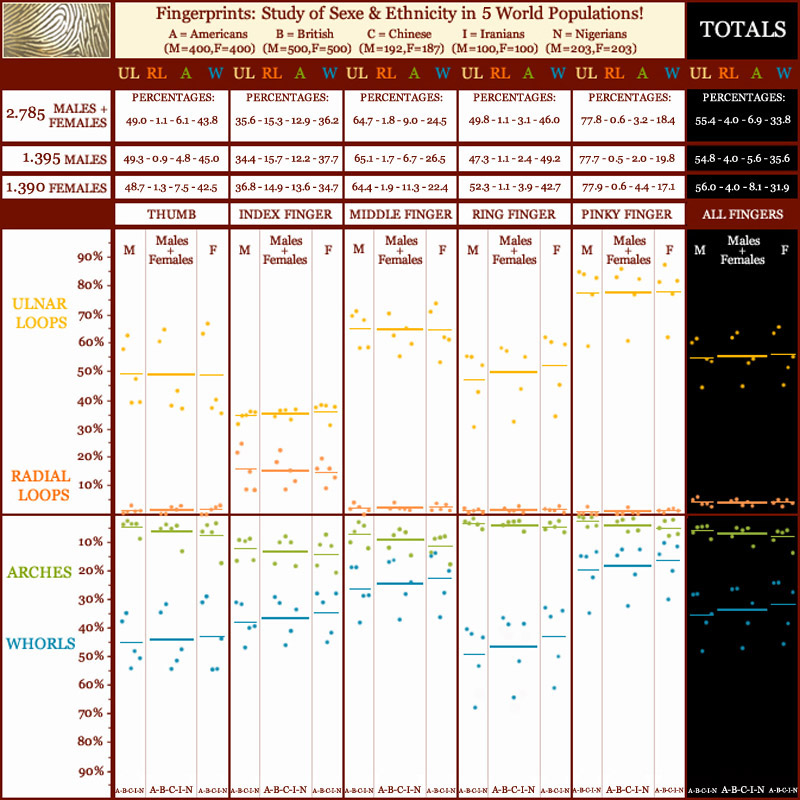
SUMMARY: The conclusion can only be that fingerprints bare a component that is strongly linked with ethnicity!
How do fingerprints related to diseases & syndromes? ...more.
![]() FINGERPRINTS INDEX:
FINGERPRINTS INDEX:
INTRO: Fingerprint Distributions & Hand Diagnostics
• HISTORY of Fingerprints
• CLASSIFICATION of Fingerprints
• SEXE DIFFERENCES & Fingerprints
• ETHNIC DIFFERENCES & Fingerprints
• DISEASES & Fingerprints
• Fingerprints & BEHAVIOR!
• FINGERPRINT DISTRIBUTIONS on the 5 Fingers
• WORLD MAP of Fingerprints
• 10 Facts about radial loop fingerprints
• 10 Facts about arch fingerprints
• MORE NEWS about Fingerprints (+ Palm Dermatoglyphics)
• Dermatoglyphics Multiple Intelligence Test {Review]
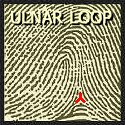
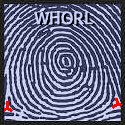


ULNAR LOOP - WHORL - RADIAL LOOP - ARCH
![]() FINGERPRINT DIAGNOSTICS:
FINGERPRINT DIAGNOSTICS:
• Fingerprints in DIABETES MELLITUS!
• Fingerprints in RHEUMATOID ARTHRITIS!
• Fingerprints in SCHIZOPHRENIA!
• Fingerprints in DOWN SYNDROME!
• Fingerprints in FRAGILE-X SYNDROME!
_(In autism 2% to 6% have Fragile-X syndrome!)
Video: race is more than skin color!
• The hand lines (palmar creases)
• The simian line
• The Sydney line
• The Hypothenar whorl
• What can finger length reveal?
• The 5th finger (pinky)
• The fingernail tutor

EARLY HAND DIAGNOSTICS:
& HANDS ON HEALTH CARE!!
Always be aware: even though fingerprints bare the potential to show significant clues for aspects of personality, diseases & syndromes, multiple perspectives of the hand need to be taken in consideration in order to make a well substantiated reliable assessment or diagnosis.
The no.1 rule in Multi-Perspective Hand Reading describes the fundamental major principle where scientific hand reading begins: